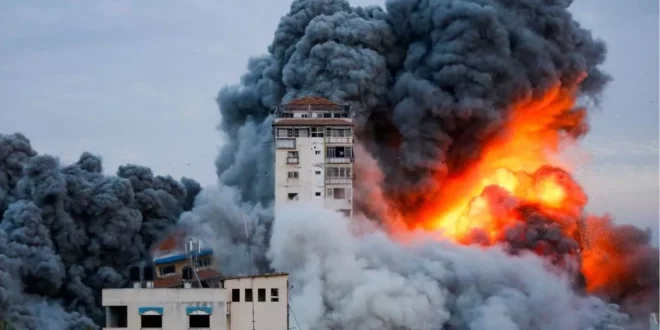Tel Aviv. In the face of increasing terrorist ( terrorist) violence perpetrated by Hamas, Israel has formulated a comprehensive strategy aimed at decisively neutralizing the Palestinian terrorist group and achieving long-term peace and stability in the Gaza Strip. This strategy is based on the belief that Hamas, with its long history of terrorism and anti-Israel rhetoric, poses an imminent threat to Israeli civilians and regional security, as evidenced by the attacks that occurred at more than two dozen locations in Israel on October 7. Was seen in the attacks.
In stark contrast to the Palestine Liberation Organization (PLO) or Fatah, which rules the West Bank, Hamas has long pursued a fundamentalist agenda that seeks to completely eliminate Israel as a sovereign state. Hamas’s charter, which dates back to 1988, openly expresses anti-Semitism and calls for the destruction of the Jewish state. This uncompromising stance has been a key point of contention in any peace talks involving Hamas and Israel.
It is important to recognize that the goals of Hamas and the aspirations of the Gaza population are not necessarily aligned. The people of Gaza have endured the hardships of an Egyptian-backed Israeli blockade, which severely restricts the movement of goods and people in and out of the territory. Under Hamas rule, Gazans have reported repression, arbitrary arrests, and systemic human rights abuses. Recent polls have indicated growing dissatisfaction among Gazans towards Hamas’s policies, with many expressing a desire for the group to abandon its calls for Israel’s destruction and address corruption within Hamas institutions.
While Hamas won an electoral victory in Gaza in 2006, it is important to note that it only received a plurality of votes, not an absolute majority. This gap highlights the complex political landscape within the Gaza Strip and suggests that Hamas does not enjoy unanimous support among the population. And after the first election no elections were held and only in 2006 elections were held.
Despite the challenges, some Palestinians in Gaza have continued to protest against Hamas, especially in recent months. A 2022 survey showed that most Gazans believe they cannot criticize Hamas’s authority without fear of repercussions. These protests underline the growing discontent within the Gaza Strip against Hamas’s leadership. Fundamentally, Hamas has not been able to bring about the political change that the Muslim Brotherhood managed to bring about in neighboring Egypt.
Since its founding, Hamas has maintained a hostile stance, claiming that Israel has no right to exist and viewing all Israeli citizens as legitimate targets due to their perceived association with the Israeli state. This uncompromising ideology has hindered diplomatic efforts and fueled violence in the region.
In the wake of the horrific events of last weekend, Israel has adopted a comprehensive strategy aimed at completely destroying the terrorist infrastructure within Gaza. The deployment of approximately 300,000 troops reflects Israel’s commitment to ensuring the elimination of Hamas and preventing future large-scale terrorist attacks on its civilians. And if that means occupying the Gaza Strip to drive out the terrorists, Israel is prepared to do so.
Israel believes that a strong military response is necessary to significantly weaken Hamas’ capabilities. This includes targeting key Hamas facilities, including rocket launch sites, weapons storage depots and command centers. The goal is to disrupt Hamas’s power to launch attacks against Israel. Israeli forces are also conducting targeted counter-terrorism operations to capture or eliminate Hamas leaders and operatives responsible for planning and carrying out attacks against Israeli civilians.
Israel is leveraging its intelligence capabilities to identify and target Hamas’s extensive tunnel network, which the group uses to smuggle weapons and launch surprise attacks. Israel is also intensifying its efforts to stop the smuggling of weapons and materials into Gaza through its naval blockade, further hampering Hamas’s military forces.
Israel’s first objective is to neutralize Hamas, that is why the possibility of temporary occupation of Gaza is being considered as a last resort to achieve long-term security and stability. Such an occupation would require a comprehensive effort to rebuild Gaza’s infrastructure, provide humanitarian assistance, and create conditions conducive to peace.
 Indian Thought Latest News & Views
Indian Thought Latest News & Views



